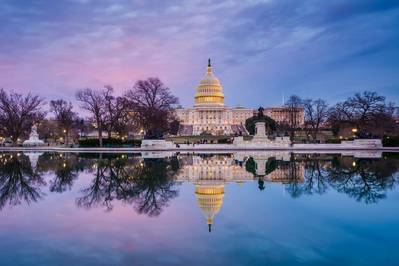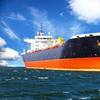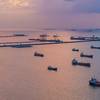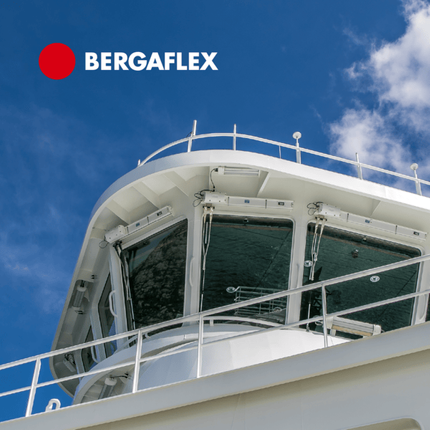WASHINGTON WATCH: A Maritime Reflection on the First 30 Days
The first thirty days of the new Trump Administration have brought sweeping changes throughout the federal government. We take a pause to assess where things stand for maritime stakeholders and what may be coming next in Washington, DC, for our industry.
- A Maritime Directive
For those that work in the U.S maritime space, it is axiomatic to state that all aspects of the maritime industry are critical to our national security. U.S. flag vessels and merchant mariners not only support U.S. economic prosperity, but also build the key sea lines of communication to support military operations. Similarly, our ports and marine terminal operators provide the critical intermodal connection to provide the constant flow goods needed by our Nation and warfighters. Of course, our shipbuilding industrial base is essential to ensuring American power and influence throughout the world. However, for reasons that remain unclear, when discussing our national security within Washington, DC, the U.S. maritime industry often remains an afterthought.
Thankfully, that historic trend appears to be changing under the leadership of National Security Advisor (“NSA”) Mike Waltz. There was resounding enthusiasm when President Trump announced the appointment of then-Congressman Waltz to serve as the NSA. In his time as the representative for Florida’s 6th District, Waltz made it clear that he not only considered the maritime industry to be a critical part of our national security, but that he was ready to champion for additional government support. Notably, Waltz was one of the lead authors of the bipartisan, bicameral Congressional Guidance for a National Maritime Strategy, which aimed at developing a clear strategy to reinvigorate the United States as maritime nation to counteract China’s influence over the world’s oceans. In the report, Waltz stated, “We must act now, before it is too late, and make a once in a generation investment in the future of America’s maritime power.”
In his current role, Waltz appears to be carrying this message forward, establishing a maritime directorate that will be crucial to establishing – and implementing – a clear maritime strategy. This directorate unequivocally demonstrates the commitment of the President and NSA Waltz to integrating the U.S. maritime industry as part of the national security apparatus. This type of early and clear attention to our industry should yield significant opportunity for counteracting the years of neglect that have historically plagued U.S. maritime development.
- Tariffs and Cargo
As predicted, tariffs have been a cornerstone of the first 30 days of President Trump’s second term. The long-term impacts on cargo flowing through U.S. ports remains unclear, with additional tariffs and threats of reciprocity changing minute-by-minute.
The more immediate impact on the U.S. maritime industry, however, has been the freezing of programs administered by the U.S. Agency for International Development (“USAID”). Three food aid programs provide a critical cargo base for U.S.-flag carriers in international trade: Food for Peace (also known as “PL-480”), which is administered by USAID, and Food for Progress and McGovern-Dole, which are administered by the U.S. Department of Agriculture (“USDA”) . At least 50 percent of the cargo generated by these programs is mandated to be carried aboard U.S.-flag vessels, pursuant to the Cargo Preference Act of 1954 (the “CPA 1954”). Under each of these programs, U.S. food is purchased through USDA (including wheat, sorghum, pulses, rice, corn, soybeans, and vegetable oil) and is transported to recipient nations, with African countries representing the largest recipients.
While Food for Progress and McGovern-Dole appear to have been restored, the future of PL-480 is far less clear, with the Administration signaling its intent to effectively shutter USAID. While USAID’s track record of complying with the requirements of the CPA 1954 is far from perfect, the loss of PL-480 cargoes nonetheless would be a significant blow to many U.S.-flag operators, in addition to the accordant impact on U.S. farmers. There are, of course, pending legal challenges regarding the freezing of USAID operations and there may be alternative administrative measures for PL-480, such transferring the program to USDA, which has a history of not only complying, but exceeding, the U.S.-flag requirements of the CPA 1954.
- Efficiency and Leadership
The reduction of the federal workforce is, of course, not restricted to USAID.
The actions of the Department of Government Efficiency (“DOGE”) have dominated headlines, with probationary worker terminations and deferred resignations reducing the workforce across federal agencies. The reductions are not limited to staff, as the Administration terminated Admiral Linda Fagan, the first female Commandant of the U.S. Coast Guard, on day one. A statement issued by the Department of Homeland Security asserts that Admiral Fagan “was terminated because of her leadership deficiencies, operational failures, and inability to advance the strategic objectives of the U.S. Coast Guard.” Admiral Kevin Lunday assumed the duties of the Acting Commandant and a permanent Commandant is yet to be nominated by President Trump.
Other maritime agencies also face leadership vacancies, which is typical at the beginning of any new Administration. The Maritime Administration (“MARAD”) is yet to have a Maritime Administrator nominated, nor has the President appointed a Deputy Administrator or Chief Counsel (which positions do not require Senate confirmation). The shortages within MARAD are not only at the top, as confirmed by a February 13th Government Accountability Office (“GAO”) report entitled Maritime Administration: Actions Needed to Help Address Workforce Challenges.
GAO found that MARAD had a 12.3 percent vacancy rate (116 vacancies out of 941 authorized full-time positions) in addition to facing further near-term challenges with 43 percent of the staff being retirement eligible in the next four years. If, as noted above, the Trump Administration is focused on rebuilding the U.S. maritime industrial base, it will need to be creative in doing so with a depleted MARAD staff. Additional reliance on partnerships with private industry, such as the Vessel Construction Manager model that continues to successfully deliver National Security Multi-Mission Vessels (as discussed in prior articles) may help to address the staffing deficiencies, while creating further commercial opportunities for maritime stakeholders. Indeed, if the first 30 days are any indication, President Trump’s second term could lead to a genuine rebirth of the U.S. maritime industry.
About the Author: Jeff Vogel is a shareholder in Cozen O’Connor’s Transportation & Trade Group. He focuses his practice on strategic and operational matters affecting the United States maritime industry and on government contracts across all industries. Jeff can be reached at [email protected].












